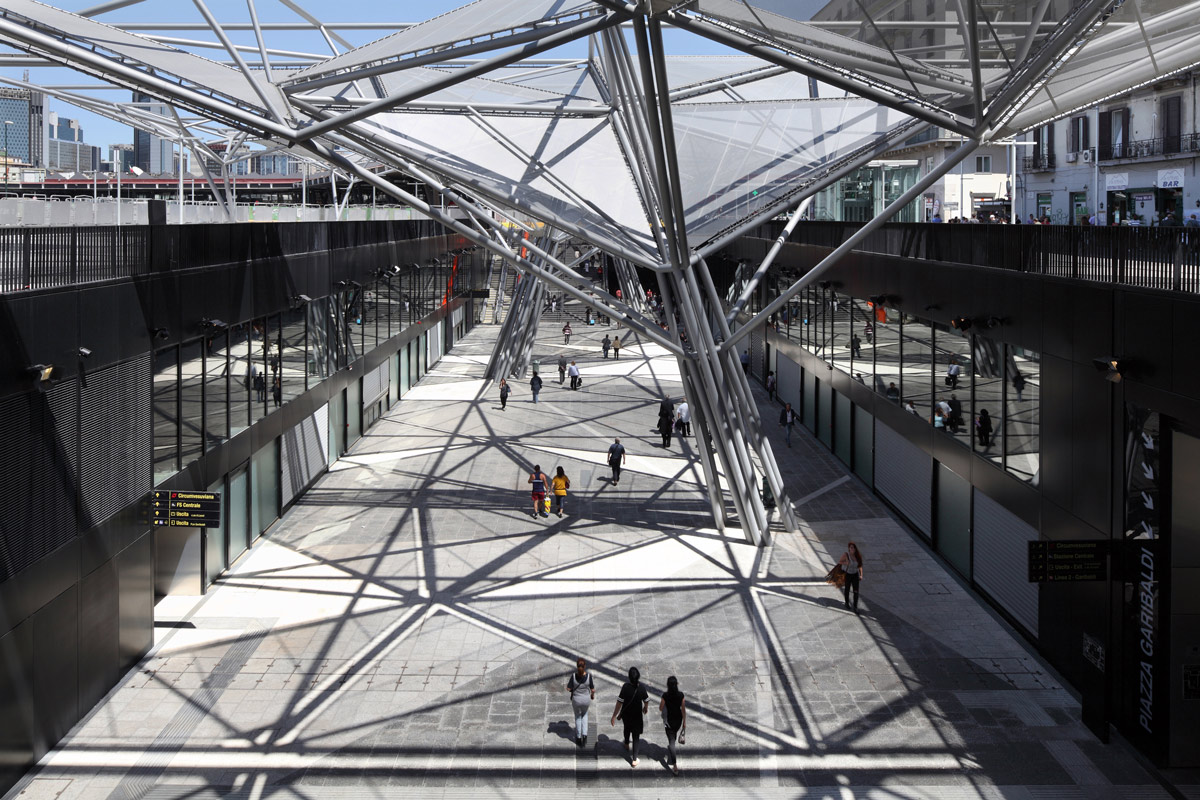"The miracle of Perrault, said Massimiliano Fuksas recently, about the station of Naples, is bringing down the light to the platform, to the depths of the metro, at 40 meters from the square, showing the stomach and the entrails of Naples but also injecting the city’s activity in the ground that history hadn’t taken over yet".
Perrault merges the outside and the inside, the infrastructural and the urban. He stages the depth and writes the experience of the burying and the underground by extending the uses and the views between above and below. The “Garibaldi” metro station isn’t a subway entrance, no more than a monument station, but something extending, stretching and coming undone to bring closer and give life to the present elements of this downtown square. This “architectonic of the link”, frequently used in the projects of the architect is based on mobility, moving and interactivity in order to establish the space. As a therapist, the architect reconciles the access vertical dynamics of the transportation ystem with the horizontal movements of the city. Expert in the burying of architecture, Perrault forbids the threshold effect by blurring the limits between the city and the station. In the central body, the mechanic escalators unfold and fold up. They regularly turn over and reverse under the Neapolitan sky. A single shiny metal sculpture with hard edges, whose regular meandering ignores the presence of some impressive struts necessary for the structural stabilisation of the infrastructures. High point of the device, the traveller ends his descent in front of a work of the artist Michelangelo Pistoletto, setting up the platform and his waitings at the foot of the escalators.
The miracle of Perrault, it’s the metamorphosis of a work of art – the Garibaldi station – into a place where the practice of the city is reinvented.

